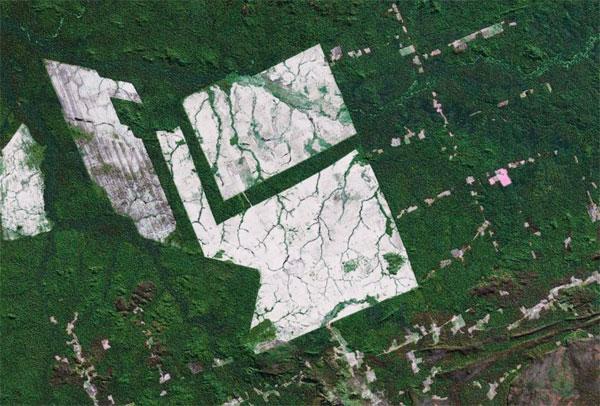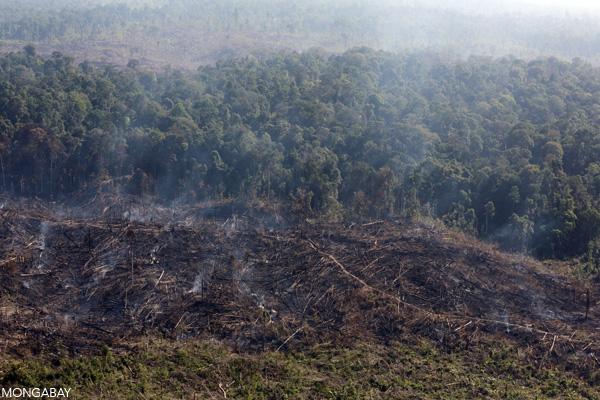Deforestation in the Brazilian Amazon continues to outpace last year’s rate by a significant margin, reveals data released today by Imazon, a Brazilian non-profit.
Imazon’s analysis of satellite data shows that for the 3-month period ended October 31, 2014, deforestation is running 226 percent of last year’s rate. Forest degradation, which often precedes outright clearing, is pacing 691 percent ahead of last year.
Unusually, the largest extent of forest loss has occurred in the state of Rondonia, rather than Mato Grosso and Para, which typically have the highest deforestation rates. All three states are major agricultural producers and most deforestation is linked to clearing for cattle pasture.
The rising deforestation rate has raised concern among scientists and environmentalists that Brazil’s remarkable progress in cutting Amazon deforestation may be reversing. Last year clearing in the region — which houses the greatest extent of tropical rainforest on the planet — rose 29 percent off a historic low.
The Brazilian government has so far been mum on the apparent jump in deforestation. INPE, the national space research agency, has not released its monthly deforestation bulletin since July, putting it three months behind Imazon, which serves as an important watchdog for holding the Brazilian government to account on forest data. INPE did not respond to request for comment.
Deforestation in the Brazilian Amazon has fallen sharply over the past decade due to a combination on government interventions, private sector initiatives, and macroeconomic factors. However recently published research suggests that reducing deforestation further will be increasingly difficult due to the rising patchiness and remoteness of clearing. Whereas large-scale forest clearing is easy to observe via satellite, small areas of deforestation are more difficult to detect on a timeframe that allows for effective law enforcement action.
Additionally, the 2012 revision to Brazil’s Forest Code relaxed penalties for smallholder clearing, potentially opening a loophole for continued deforestation in the region. However some observers say the Forest Code revision will lead to greater compliance with Brazil’s environmental laws, which have been haphazardly enforced in the past.
This article was originally written and published by Rhett A Butler, the head administrator for news.mongabay.com. For the original story and more information, please click HERE.




